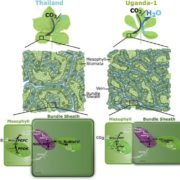
Natural Variation Reveals Interplay between C4 Biology and Water Use Efficiency
The year 2016 marked a half-century since the discovery of C4 photosynthesis, yet we still seek to elucidate many of the mechanisms underpinning the C4 cycle. Although C4 and C3 plants share molecular units involved in photosynthesis (Miyao, 2003; Kellogg, 2013), C4 plants have unique morphological traits…
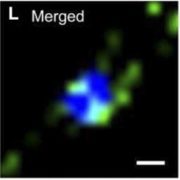
Live-Cell Imaging of Mobile RNAs in Plants
One of the most exciting findings in the past few decades is the discovery that individual mRNAs and noncoding RNAs can act as long-distance signaling messengers traveling cell to cell to distant sites in the plant. Numerous examples unveiled the involvement of endogenous RNAs as non-cell-autonomous…
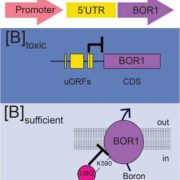
Adjusting Boron Transport by Two-Step Tuning of Levels of the Efflux Transporter BOR1
Boron is an essential plant micronutrient with the narrowest optimal range in the soil of any micronutrient. At neutral pH, boron is present as uncharged boric acid, B(OH)3, which can freely penetrate membranes. Boron plays an important role in cross-linking cell wall components, but boron starvation…
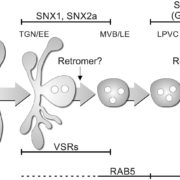
Turnover of Tonoplast Proteins
By Rumen Ivanov and David G. Robinson
Our knowledge of vacuole biogenesis and the transport of proteins to the vacuole has advanced consistently over the last 30 years. In meristematic cells, the tonoplast appears to develop directly out of the endoplasmic reticulum (Viotti et al., 2013). Once it is…
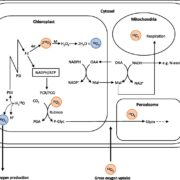
Photosynthetic Oxygen Production: New Method Brings to Light Forgotten Flux
Oxygen (O2) is evolved during photosynthetic electron transport when water is split by the oxygen-evolving complex to provide protons and electrons to the chloroplastic electron chain, thereby generating ATP and NADPH—the energy source and reducing power for plant metabolism. The majority of this chemical…
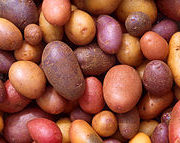
Improving on the Humble Spud
The humble spud. Simple, unassuming, yet vital in supporting a large proportion of the world’s population. Historically speaking, much of the research performed on potatoes (Solanum tuberosum) has gone into enhancing their disease resistance, justifiably so given the severe famines brought about through…
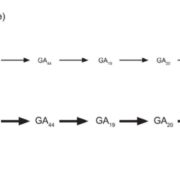
The Long and the Short of It: GA 2-oxidaseA9 Regulates Plant Height in Wheat
The discovery of semidwarfing genes in wheat and rice was a crucial turning point of the Green Revolution in the late 1960s. The Green Revolution aimed to maintain per capita food supplies worldwide despite the projected doubling of global population by the end of the 20th century. Its main features…
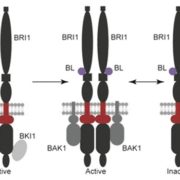
MicroProteins as the First Step toward a Master Key for Posttranslational Regulation
Determining the function of a gene often relies on transgenic plants with altered transcriptional or translational levels. This is usually achieved through overexpression, knockout, or knockdown. However, each of these approaches has specific advantages and drawbacks. For instance, knockouts, which…
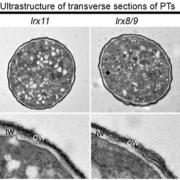
Coordinating Cell Walls and Cell Growth: A Role for LRX Extensin Chimeras
To regulate the addition of cell wall components as cells expand and to control changes in cell wall composition as cells differentiate, there must be a feedback system that senses the state of the cell wall and transmits this information. The mechanisms underlying cell wall-intracellular signaling remain…

